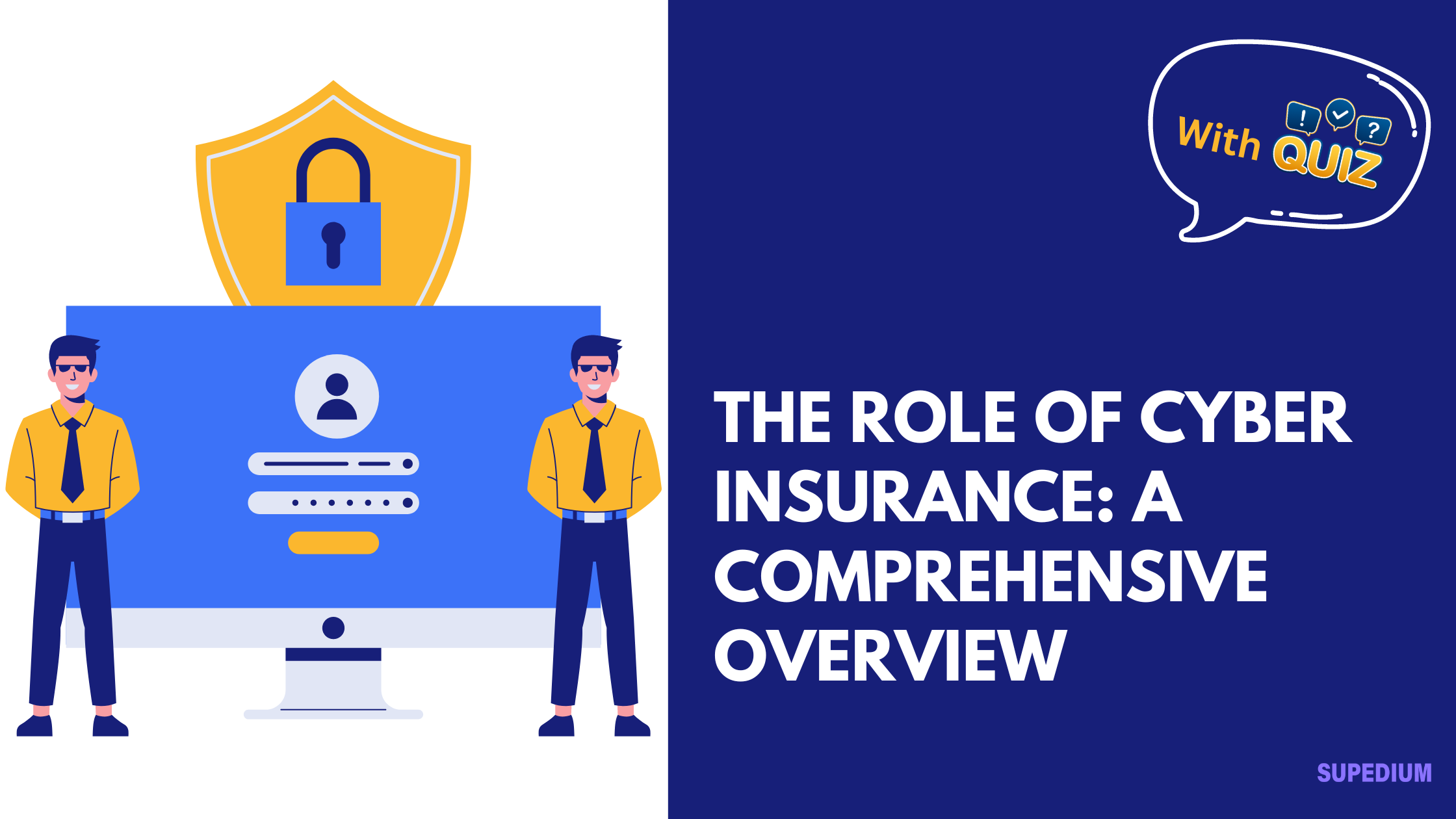Table of Contents
![]()
Introduction
In an era where cyber threats are a persistent and growing concern, cyber insurance has emerged as a crucial tool for mitigating risks associated with digital operations. Cyber insurance is specifically designed to protect organizations against the financial fallout from internet-based risks, including data breaches, cyberattacks, and various other cyber-related incidents. As the frequency and sophistication of cyber threats increase, the importance of cyber insurance in safeguarding businesses has become more apparent.
Understanding Cyber Insurance
Types of Cyber Insurance Policies
Cyber insurance policies can be broadly categorized into two main types: first-party coverage and third-party coverage.
First-Party Coverage: This type of coverage is designed to protect the insured organization from direct losses incurred due to a cyber incident. Key components include:
- Data Breach Response Costs: Covers expenses related to investigating, containing, and remediating a data breach.
- Business Interruption Losses: Provides compensation for lost income during periods when business operations are disrupted due to a cyber event.
- Cyber Extortion (Ransomware) Coverage: Addresses the costs associated with responding to ransomware attacks, including ransom payments.
- Forensic Investigation Costs: Covers the expenses of hiring experts to determine the cause and scope of a cyber incident.
Third-Party Coverage: This type of coverage addresses the liability of the insured organization for damages claimed by external parties affected by a cyber incident. Key components include:
- Liability for Data Breaches: Covers legal claims and damages related to breaches that affect customers, partners, or other third parties.
- Legal Defense and Settlements: Provides financial support for legal defense costs and settlement expenses arising from cyber-related lawsuits.
- Regulatory Fines and Penalties: Covers fines and penalties imposed by regulatory bodies for non-compliance with data protection laws.
Key Components of Cyber Insurance Policies
When evaluating cyber insurance policies, several critical components should be considered:
- Coverage Limits and Deductibles: These define the maximum amount the insurer will pay for a covered loss and the out-of-pocket expense the insured must pay before coverage kicks in.
- Exclusions and Limitations: Policies may have specific exclusions or limitations, such as coverage for certain types of cyberattacks or damages.
- Coverage for Different Types of Threats: Policies may cover a range of cyber threats, including malware, phishing, and denial-of-service attacks.
- Requirements for Coverage: Insurers often require organizations to implement specific security measures to qualify for coverage, such as encryption and regular security audits.
Benefits of Cyber Insurance
Financial Protection
One of the primary benefits of cyber insurance is financial protection. It helps mitigate the significant financial losses that can result from cyber incidents. Coverage includes:
- Mitigation of Financial Losses: Reimbursement for costs associated with data breaches, business interruptions, and extortion payments can significantly reduce the financial impact on an organization.
- Coverage for Legal Costs and Regulatory Fines: Insurance can cover the costs of legal defense, settlements, and regulatory fines, which can be substantial.
Risk Management and Mitigation
Cyber insurance also offers valuable risk management and mitigation benefits:
- Access to Risk Assessment and Cybersecurity Expertise: Many insurers provide access to risk assessment tools and cybersecurity experts who can help identify vulnerabilities and improve security practices.
- Improvement of Security Practices: Insurers often offer recommendations for enhancing cybersecurity measures, which can help reduce the likelihood of future incidents.
- Assistance with Crisis Management and Public Relations: Coverage may include support for managing the aftermath of a cyber incident, including public relations efforts and communication strategies.
Compliance and Legal Support
Cyber insurance can assist with compliance and legal matters:
- Help with Meeting Regulatory Requirements: Insurance policies can support compliance with data protection laws such as GDPR and CCPA by covering fines and penalties related to non-compliance.
- Coverage for Fines and Penalties: Policies may cover fines and penalties imposed by regulatory bodies for violations of data protection regulations.
- Support in Dealing with Legal Claims: Coverage can assist with legal claims and lawsuits arising from data breaches or other cyber incidents.
The Process of Obtaining Cyber Insurance
Assessing Cyber Risk
The first step in obtaining cyber insurance is assessing your organization’s cyber risk:
- Conducting a Risk Assessment or Audit: A thorough risk assessment helps identify potential vulnerabilities and the potential impact of cyber incidents on your business.
- Identifying Vulnerabilities and Potential Impacts: Understanding your organization’s specific risks allows you to tailor your insurance coverage to address those risks effectively.
Choosing a Cyber Insurance Policy
Selecting the right policy involves several considerations:
- Comparing Coverage Options and Limits: Evaluate different policies to find one that meets your organization’s needs and provides adequate coverage limits.
- Evaluating Policy Terms and Conditions: Carefully review policy terms to ensure they align with your risk profile and coverage requirements.
- Consulting with Insurance Brokers or Experts: Seek advice from insurance brokers or cybersecurity experts to help navigate the complexities of cyber insurance.
Implementing Risk Management Measures
Once you have obtained a policy, it is essential to implement risk management measures:
- Developing and Maintaining a Cybersecurity Plan: A robust cybersecurity plan helps prevent cyber incidents and ensures compliance with policy requirements.
- Ensuring Adherence to Policy Requirements: Implement the security measures required by your insurer to maintain coverage.
- Regularly Updating Security Measures: Continuously update and improve security measures to adapt to evolving threats.
Challenges and Limitations
Evolving Nature of Cyber Threats
One of the main challenges in cyber insurance is the ever-changing nature of cyber threats:
- Difficulty in Predicting and Covering New Threats: New types of cyberattacks emerge regularly, making it challenging to predict and cover all potential risks.
- Challenges in Determining Appropriate Coverage Limits: Setting appropriate coverage limits can be difficult, as the potential impact of a cyber incident can vary widely.
High Costs and Complexities
Cyber insurance can also present financial and administrative challenges:
- Expensive Premiums for Comprehensive Coverage: Comprehensive coverage can be costly, particularly for organizations with high-risk profiles.
- Complexity of Policy Terms and Conditions: The terms and conditions of cyber insurance policies can be complex and difficult to navigate without expert assistance.
Issues with Claims and Coverage
There may be challenges related to claims and coverage:
- Disputes Over Claim Validity and Coverage Scope: Insurers and policyholders may disagree over the validity of claims or the scope of coverage.
- Delays and Complications in the Claims Process: The claims process can be lengthy and complicated, leading to delays in receiving compensation.
Future Trends and Developments
Evolving Threat Landscape
The future of cyber insurance will be shaped by the evolving threat landscape:
- Adaptation to Emerging Threats and Technologies: Policies will need to adapt to address new types of cyber threats and technological advancements.
- Increasing Focus on Ransomware and State-Sponsored Attacks: Ransomware attacks and state-sponsored cyber threats are likely to be a significant focus for future policies.
Advances in Cyber Insurance Policies
Cyber insurance policies are expected to evolve:
- Introduction of New Coverage Options and Endorsements: Insurers may introduce new coverage options to address emerging risks and needs.
- Integration with Cybersecurity Solutions and Services: Policies may increasingly integrate with cybersecurity solutions to provide a more comprehensive approach to risk management.
Regulatory and Legal Changes
Regulatory and legal changes will impact cyber insurance:
- Potential Changes in Data Protection Laws and Regulations: New or updated data protection laws may influence insurance requirements and coverage.
- Impact of New Legal Requirements on Cyber Insurance Policies: Insurers will need to adapt their policies to comply with evolving legal and regulatory requirements.
Conclusion
Cyber insurance plays a crucial role in managing the risks associated with cyber incidents. It provides financial protection, supports risk management, and helps with compliance and legal issues. As the digital landscape continues to evolve, the importance of cyber insurance in protecting organizations from cyber threats will only grow. Businesses should assess their cyber risks, carefully select insurance policies, and implement robust risk management measures to ensure they are adequately protected in an increasingly complex digital world.






Be the first to comment